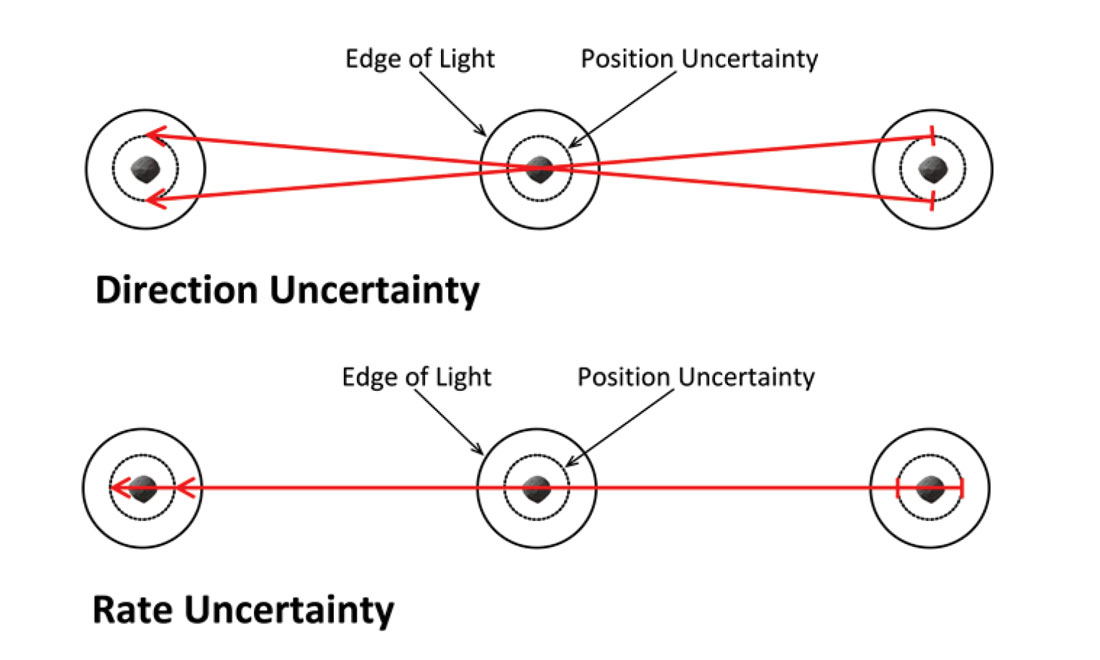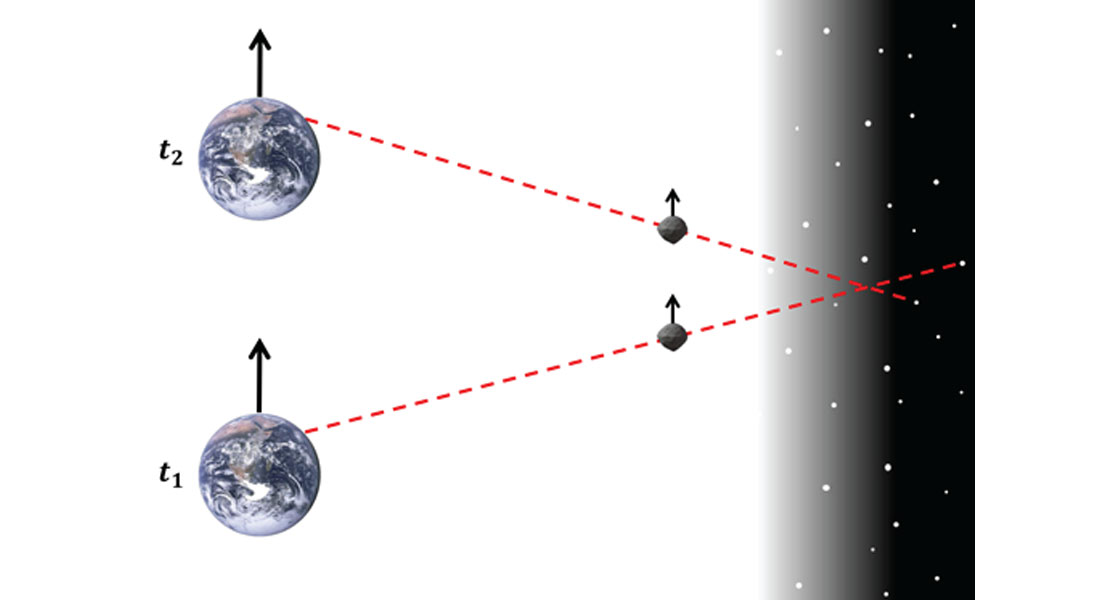The last two decades have seen extraordinary advances in diverse research directions such as the Standard Model of particle physics or unravelling the DNA sequences of viruses to primates. However, possibly under-appreciated is that our Solar System is being mapped for the first time in an unprecedented age of discovery of small bodies, asteroids and comets. The three papers in this issue describe different strategies and technologies that: 1) apply a new search cadence to discover small asteroids just before they impact Earth (A. Heinze), 2) use infrared detection to both discover and characterize asteroids (A. Mainzer et al.), and 3) have discovered most of the asteroids to date (S. Larson).
Asteroid Search Basics
All asteroid searching relies on their motion ( typically 10 to 1,000 arcseconds per hour) relative to the fixed stars so are often referred to as “moving object searches” (the stars also move but their proper motion rates are ~5 to 7 orders of magnitude less so are undetectable in these surveys). Figure 1 schematically illustrates how a sequence of three images will show an asteroid having moved (typical imaging sequences will be 20 to 60 minutes long – the survey “cadence”).

This initial series of positions is called an “arc” or “tracklet” and is a long way from establishing an orbit as the object’s distance is unconstrained. Figure 1 also shows that both the rate and direction of the motion are uncertain in the plane of the sky because of the position uncertainty for each observation. To determine a provisional orbit, additional observations must be taken soon enough so that they can be linked to the initial observations. In practice, the next set of observations is often taken the next night as the plane of sky uncertainties haven’t yet built up so much that the asteroid can’t be found and linked. As Figure 2 shows, the second night of data usually allows distance determination to the asteroid by measuring the parallax of the object against the fixed stars (the Earth moves ~2.5 million km in its orbit each day), and the provisional orbit is greatly improved.

Asteroid discovery and orbit determination has benefited from extraordinary international cooperation; all asteroid position observations, whether of known or new objects, are sent to the Minor Planet Center (MPC) of the International Astronomical Union (“The nerve center of asteroid detection in the Solar System.”). Most of the millions of catalogued observations are of Main Belt asteroids, but as of April 6, 2016, 14,160 near-Earth asteroids (NEA) had been discovered; Figure 2 in A. Heinze’s article illustrates the NEA discovery “explosion” of the last two decades. Suspected NEA discoveries are immediately posted on the MPC confirmation page, so that observers around the world can begin extending the discovery arcs for these sometimes very fast moving objects.
A Discovery Cascade
Once an asteroid has a well determined orbit it becomes available for follow up observations which can determine its size, shape, albedo, colour and inferred composition. The large scale compositional structure of the Main Belt and the diversity of compositions amongst the NEA population have now been established.
Perhaps most exciting is that the large number of discovered NEA’s has provided exploration targets for spacecraft missions. Japan’s Hayabusa spacecraft flown by JAXA (Japan Aerospace Exploration Agency) successfully explored asteroid 25143 Itokawa in 2005 and returned dust samples to Earth in 2010. Currently JAXA has Hayabusa II (launched December 4, 2014) on the way to asteroid 162173 Ryugu, and on Sept. 8, 2016, NASA will launch the OSIRIS-REx spacecraft to asteroid 101955 Bennu. Both these missions will explore and sample their target asteroids and return samples to Earth (in 2020 and 2023, respectively) for detailed study.

Acknowledgements
Figures 1 & 2 by L. Hanton. Earth image from nasa.gov/content/blue-marble-image-of-the-earth-from-apollo-17










Join the Conversation
Interested in starting, or contributing to a conversation about an article or issue of the RECORDER? Join our CSEG LinkedIn Group.
Share This Article